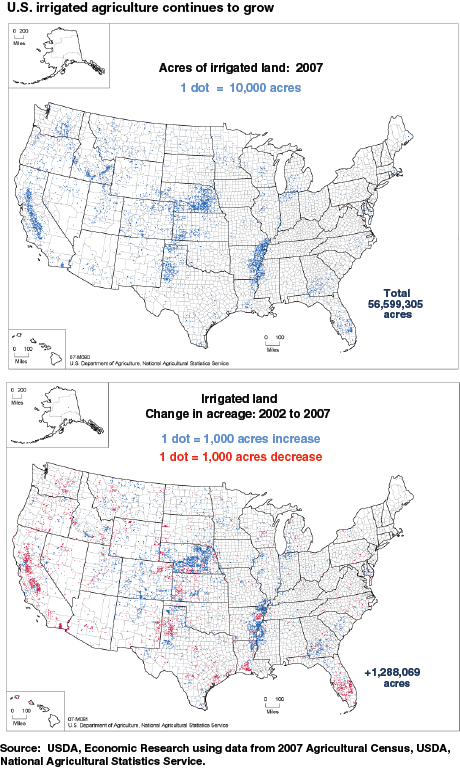On the Map: The Conservation Challenge for Sustainable Irrigated Agriculture
- by Glenn Schaible
- 9/20/2012
Nearly 57 million acres were irrigated across the United States in 2007, about 7.5 percent of all agricultural cropland and pastureland. However, expanding water demands to support population and economic growth, environmental flows, and energy-sector growth, combined with supply-and-demand shifts expected with climate change and Native American water-right claims, will present new challenges for agricultural water and conservation, particularly for the 17 Western States that account for nearly three-quarters of U.S. irrigated agriculture. While the number of irrigated acres continued to expand over the 2002-07 period. The regional distribution of irrigated agriculture changed as irrigated acres were added and dropped. Of the States adding irrigated acreage, Nebraska led with nearly 1 million acres added in the mid-2000's. California and Florida led States experiencing declines in irrigated acreage.


